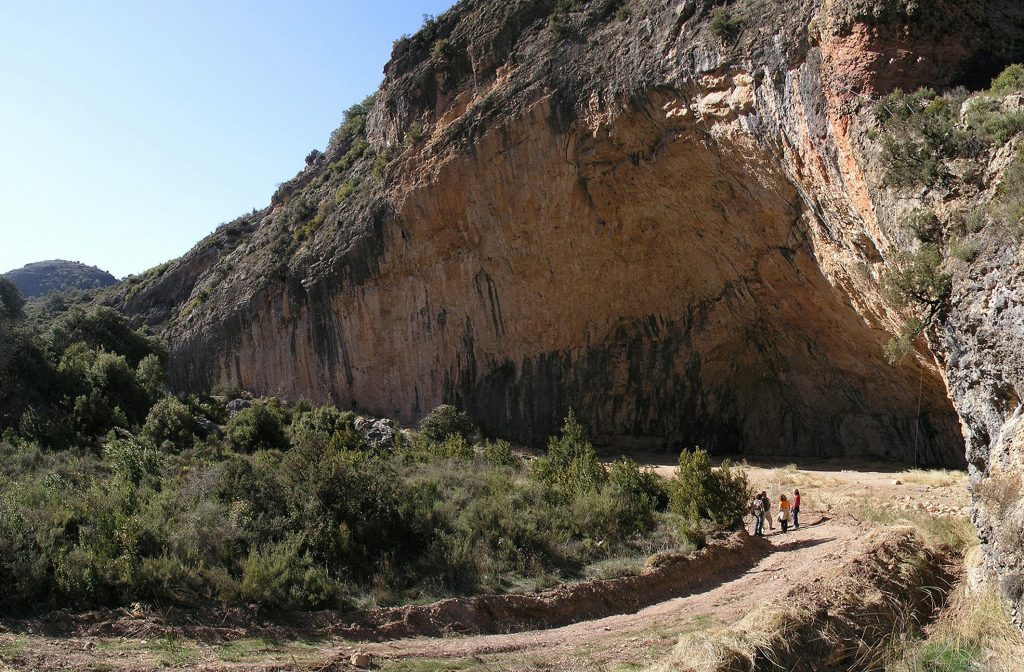Fieldwork











Location: Cova Gran de Santa Linya, Os de Balaguer, Spain
Season: June 21, 2025 to July 19, 2025
Application Deadline: June 1, 2025
Deadline Type: Rolling
Website: https://www.fieldsciences.org/program/2025-spain-cova-gran/
Discount for AIA members: No
Program Type:
Field School
RPA Certified:
No
Affiliation:
Center for Field Sciences (US), Universitat Autonoma de Barcelona (Spain)
Project Director:
Dr. Javier Sánchez Martínez (Research Associate, Universitat Autònoma de Barcelona ) and Prof. Rafael Mora Torcal (Professor, Universitat Autonoma Barcelona)
Project Description:
Where did we, humans, come from and where are we, contemporary people, heading to? These important and intimately related questions have become increasingly relevant as technological [r]evolution, along with profound political, economic, and cultural changes impact our daily lives. Leading scholarship on the issue has become broadly read and widely popular – Yuval Noah Hararri’s Sapiens: A Brief History of Humankind, Gerald Dimond’s The World Until Yesterday and Graeber & Wengrow’s The Dawn of Everything, to name just a few.
This program is dealing with our beginning, with the emergence of modern humans as seen from Southern Europe. It also deals with relationships & interaction with our closest relatives – Homo neanderthalensis. While our work is highly focused and limited in space, the unique level of preservation and depth of occupation history at Cova Gran offers an exceptional opportunity to study our ancestors, their interactions with the environment, with other hominins and with each other.
By 50,000 years ago, groups of hominins arrived at the Cova Gran rock shelter, building hearths and leaving behind well preserved bone, lithics and other evidence of human activity. These occasional visits lasted for thousands of years – throughout the Middle/Upper Paleolithic (at Cova Gran, 50,000-40,000 years ago). A complex stratigraphy of built hearths allows us to carefully study the evolution of human relationships to their environment, to specialized activities and to changes in technology. During the 2024 season, one part of the team will excavate at Sector R, where the Paleolithic visitors left their material evidence.
Limited excavations during Covid yielded spectacular results in Sector V. Partial skeletal remains of Homo Sapiens – primarily long bones – were recovered at the site and dated to 15,000 years ago. This is a rare find, as we know very little about European human populations of the time (we know a lot more about the anatomy and lifestyle of Neanderthals from the region). As these populations were likely replaced by migrants from Anatolia and the Near East during the Neolithic “revolution” (ca,7,000 years ago in our region) we know very little about the indigenous H. sapiens who originally migrated from Africa to Europe around 50,000 years ago. For the 2024 season, another part of the team will excavate in this area – Sector V – trying to find specific bones with enough preserved DNA materials to study and understand the paleogenomic and paleoanthropological relationship of this individuals with other H. Sapiens populations spread and isolated in Eurasia at the same period.
To find the best path forward we must understand where we came from. We must understand the forces that shaped our biology and culture to become what we are today. The Cova Gran project is a narrow, but deep window into the past, allowing us to explore and reflect on such issues. Cova Gran unique preservation and extremely long cultural occupation provides for the extended documentation, study, and interpretation of human evolution at the regional level. It is a critical and significant data point for the global understanding of our human origin and for our ability to make informed decisions about our collective future.
Students MUST remember that while our research is informed by big questions, field work is highly detailed, careful and slow. Expect lively discussions of exciting issues, but DO NOT expect a definite answer. Archaeological knowledge works gradually, by building evidence upon evidence, so patience and perseverance are crucial for any quality research work.
Period(s) of Occupation: Paleolithic and Neolithic periods
Notes:
Tuition cost is $4,620; Program awards 8 semester credit units (equivalent to 12 quarter credits units) through our school of record – Culver-Stockton College
Project Size: 1-24 participants
Minimum Length of Stay for Volunteers: Full length of the program
Minimum Age: 18 years old
Experience Required: None. This is hands-on, experiential learning and students will study on-site how to conduct archaeological research. Field work involves physical work and exposure to the elements and thus requires a measure of understanding that this will not be the typical university learning environment. You will have to work outdoors and will get sweaty and tired. Students are required to come equipped with sufficient excitement and adequate understanding that field work requires real, hard work, in the sun and wind. The work requires patience, discipline, and attention to detail.
Room and Board Arrangements:
Participants will live at the Alberg LaCova guest house. This rural house has shared rooms (6-8 people) and community areas. The house, bathrooms and rooms will be regularly cleaned. The Alberg provides sheets – sleeping-bags are not necessary. There is WiFi and a laundry machine for students to wash their clothes. Students will take turns and help maintain clean community spaces such as the dining room and dormitories.
The program will provide two large meals a day – lunch and dinner. These meals will include different local dishes composed of a mix of vegetables, meat, and fish, with fresh fruit. Vegetarian and participants with celiac allergies are welcome but may face limited and repetitive food options.
Academic Credit:
8 Semester Credit Units (equivalent to 12 Quarter Credit Units) are awarded through our School of Record – Culver Stockton College
Dorian Chee
5335 W Adams Blvd #106
Los Angeles
California
90016
U.S.
Phone: (562) 584-0761
The AIA is North America's largest and oldest nonprofit organization dedicated to archaeology. The Institute advances awareness, education, fieldwork, preservation, publication, and research of archaeological sites and cultural heritage throughout the world. Your contribution makes a difference.
Notifications